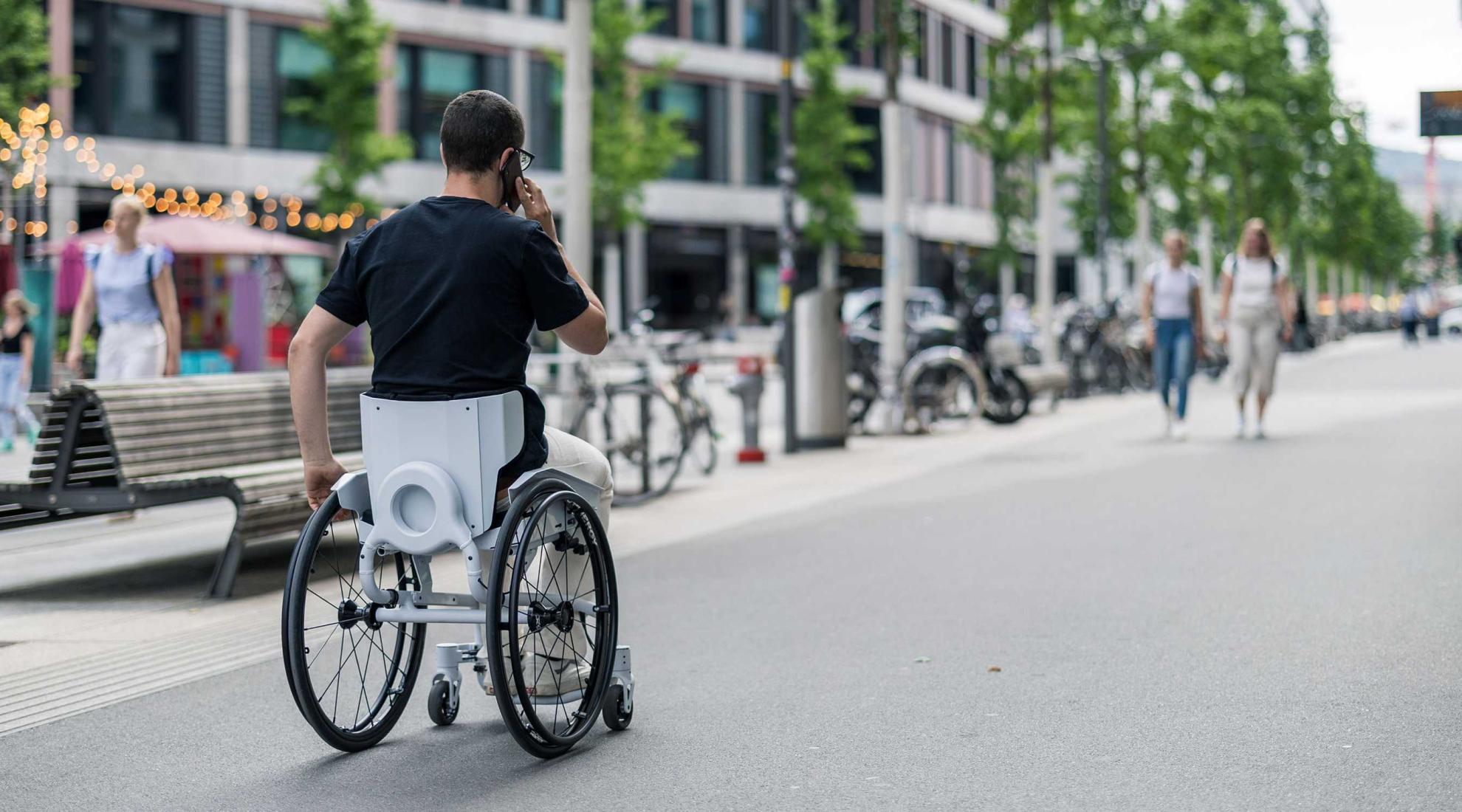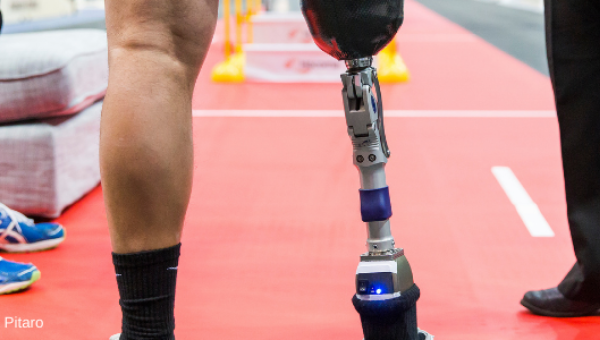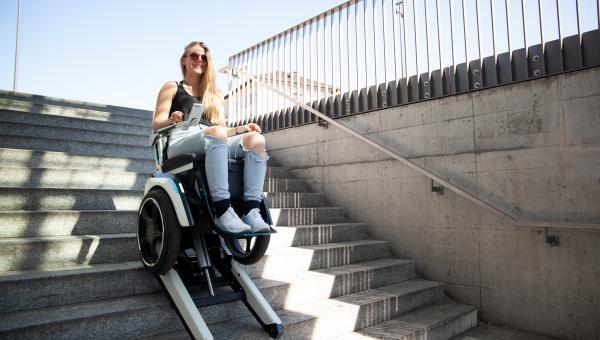Moveable backrest controls wheelchair

With a moveable backrest to control the wheelchair, one hand remains free.
Wheelchairs are a great invention, but steering is not always straightforward due to the freely rotating front wheels. For example, if a path inclines sideways, it is difficult to drive straight ahead and you have to steer forcefully. But there is another way.
Reto Togni and Stefan Villiger, both research assistants at the Laboratory for Biomechanics of Movement at ETH Zurich, have developed a wheelchair with a moveable backrest. The backrest is directly connected to the front wheels and thus controls the entire wheelchair. This is all purely mechanical: if the user leans to the right, the wheelchair moves to the right; if the user leans to the left, the wheelchair moves to the left.
The engineers have been working on this innovative control system since 2017. More than 50 wheelchair users have now tested the backrest control system, with very positive feedback:
One test participant said it was the greatest improvement for wheelchair users since the invention of the wheel.
Less braking, less energy consumption
The main reason for the enthusiasm is fuelled by the fact that the new wheelchair requires less human power to drive, as there is no need to constantly correct and brake to stay on track. As part of his doctoral thesis, Togni set up a test track and asked 29 test users to drive around it several times with and without backrest control. The sensors installed in the wheelchair clearly showed that significantly less braking was required to cover the same distance and that less propulsion was needed due to the correspondingly higher speed.
Benefits for health
According to the ETH Zurich press release, using the backrest to steer the wheelchair not only reduces the amount of human force required, but also protects the wheelchair user's shoulders, arms and hands. And there are other health benefits: the gentle movements of the torso are thought to stimulate blood circulation and can help with back pain and digestive problems.
Adaptions for market launch
With the patents for the unique steering technology secured, the next step is to turn the prototype into a fully-fledged product. The components for a wheelchair are easy to obtain, but in order to get the full benefit, each wheelchair needs to be customised for the patient. Only then will it be accepted by insurance companies and released for the market. This is time-consuming and makes it difficult to bring a completely new wheelchair to market in large numbers.
To drive commercialisation forward, the ETH research project will soon be turned into a start-up company called “Versive” and a round of funding is being sought.




